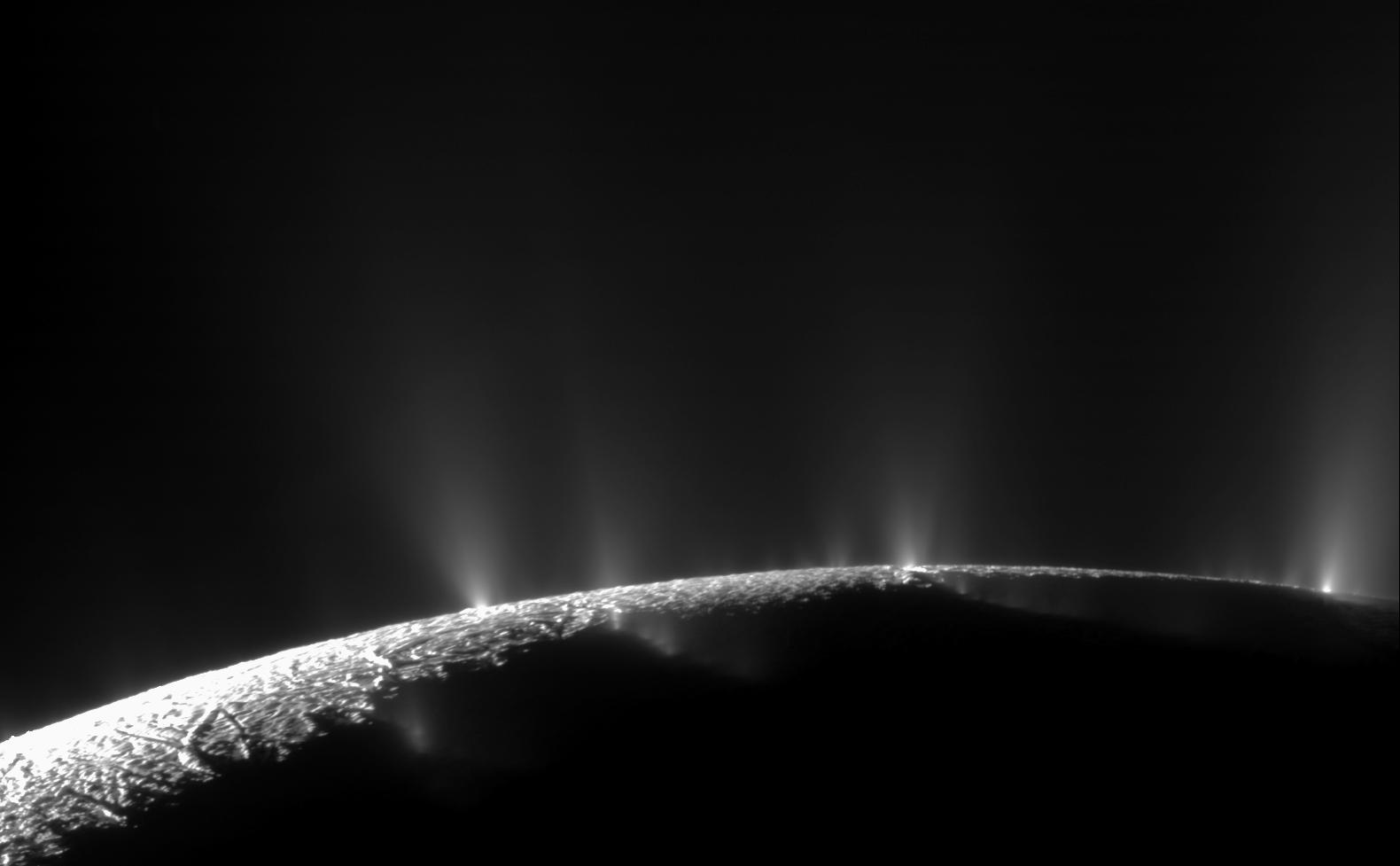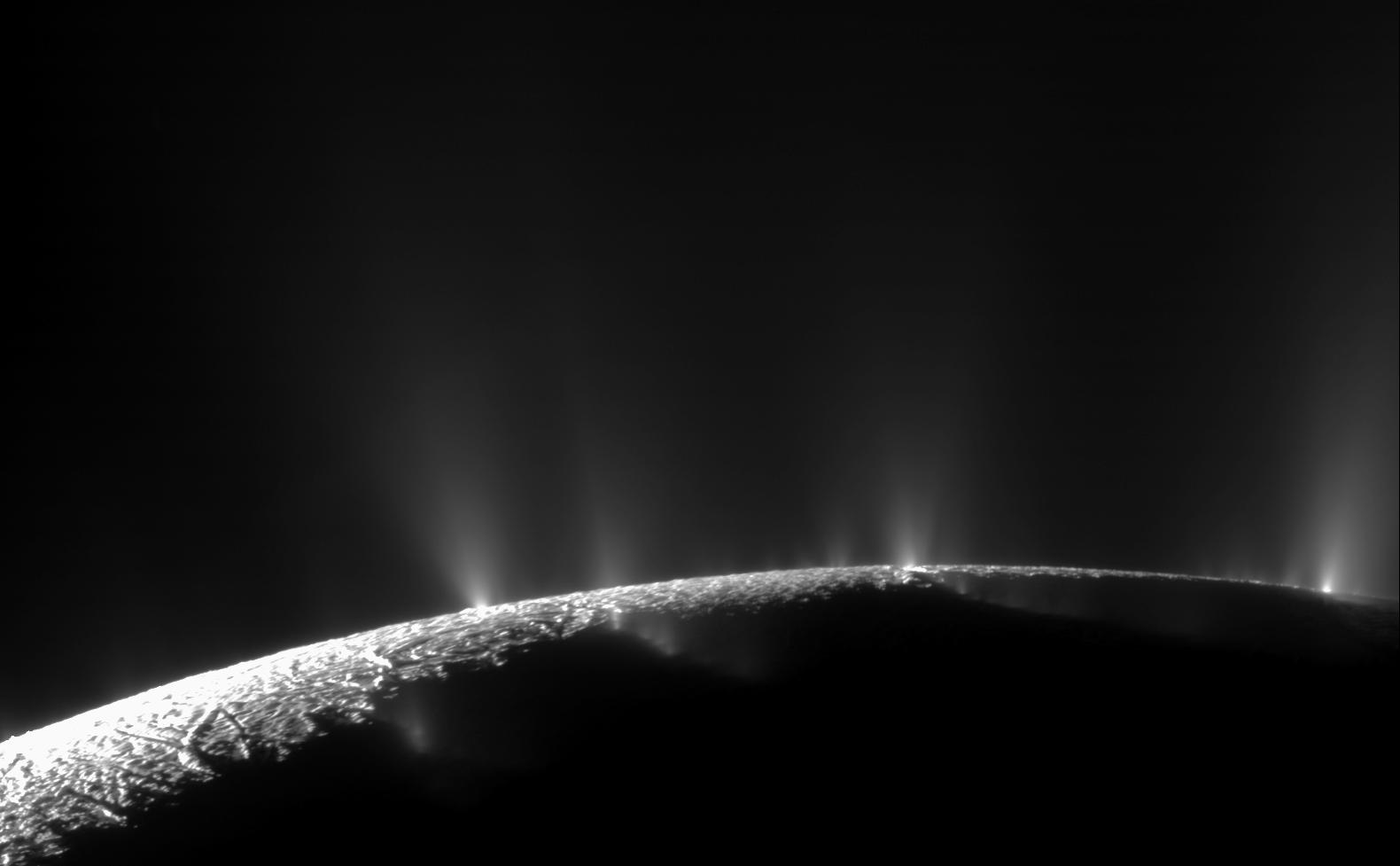Bursting at the Seams: the Geyser Basin of Enceladus

| Credit | NASA/JPL/Space Science Institute |
|---|---|
| PIA Number | PIA11688 |
| Language |
|
Dramatic plumes, both large and small, spray water ice and vapor from many locations along the famed "tiger stripes" near the south pole of Saturn's moon Enceladus. The tiger stripes are four prominent, approximately 84-mile- (135-kilometer-) long fractures that cross the moon's south polar terrain.
This two-image mosaic is one of the highest resolution views acquired by Cassini during its imaging survey of the geyser basin capping the southern hemisphere of Saturn's moon Enceladus. It clearly shows the curvilinear arrangement of geysers, erupting from the fractures. .From left to right, the fractures are Alexandria, Cairo, Baghdad, and Damascus.
As a result of this survey, 101 geysers were discovered: 100 have been located on one of the tiger stripes (PIA17188), and the three-dimensional configurations of 98 of these geysers have also been determined (PIA17186). The source location of the remaining geyser could not be definitively established. These results, together with those of other Cassini instruments, now strongly suggest that the geysers have their origins in the sea known to exist beneath the ice underlying the south polar terrain.
These findings from the imaging survey, of which the two images composing this mosaic are a part, were presented in a paper by Porco, DiNino, and Nimmo and published in the online version of the Astronomical Journal in July 2014: http://dx.doi.org/10.1088/0004-6256/148/3/45.
A companion paper, by Nimmo et al. is available at: http://dx.doi.org/10.1088/0004-6256/148/3/46.
The Cassini-Huygens mission is a cooperative project of NASA, the European Space Agency and the Italian Space Agency. NASA's Jet Propulsion Laboratory, a division of the California Institute of Technology in Pasadena, manages the mission for NASA's Science Mission Directorate, Washington. The Cassini orbiter and its two onboard cameras were designed, developed and assembled at JPL. The imaging operations center is based at the Space Science Institute in Boulder, Colo.
For more information about the Cassini-Huygens mission visit http://saturn.jpl.nasa.gov and http://www.nasa.gov/cassini. The Cassini imaging team homepage is at http://ciclops.org.
Photojournal note: This image has been rotated 180 degrees from its original orientation published on February 2, 2010.

